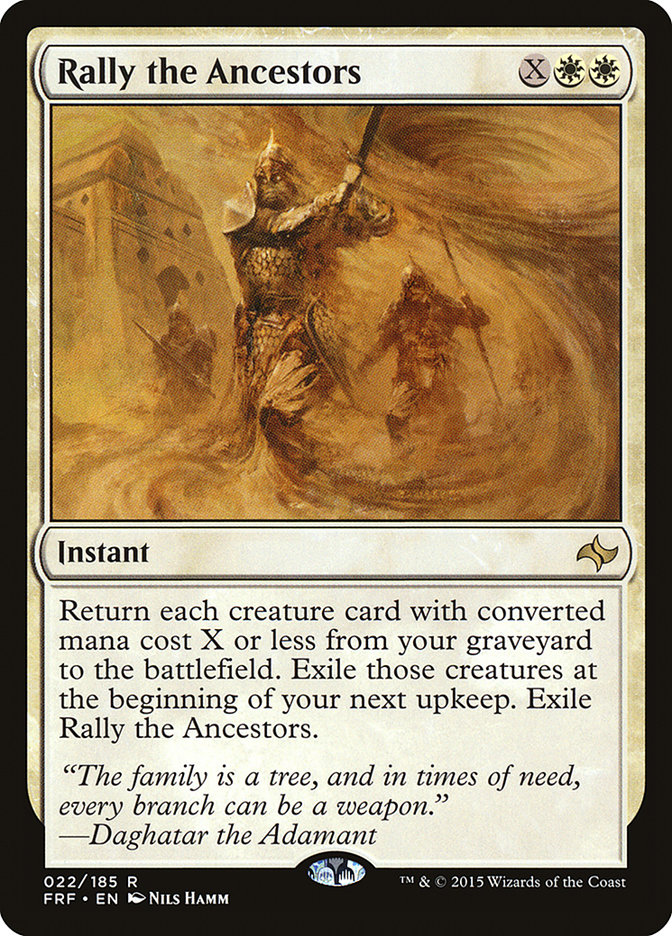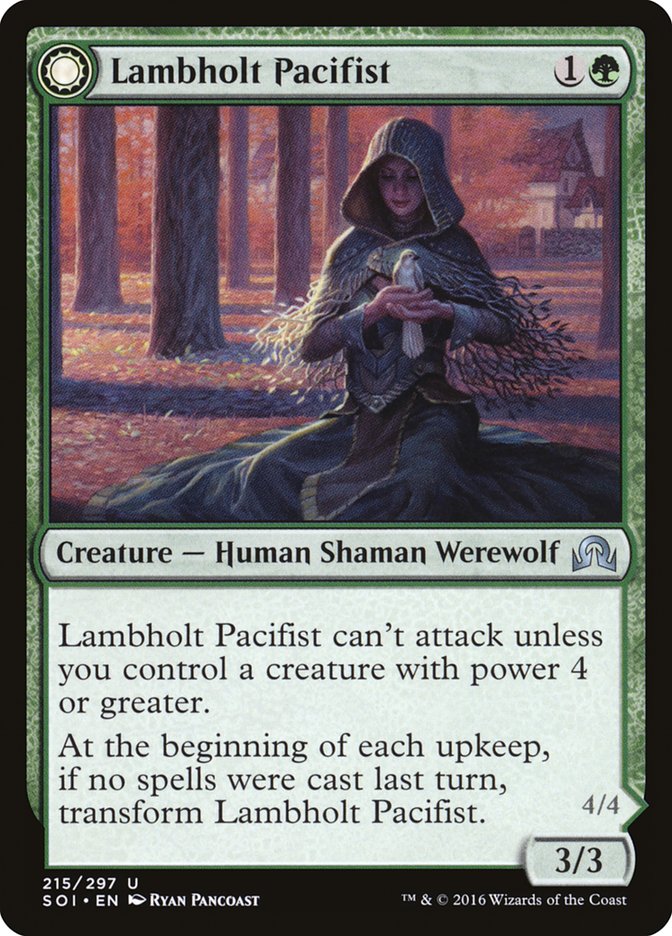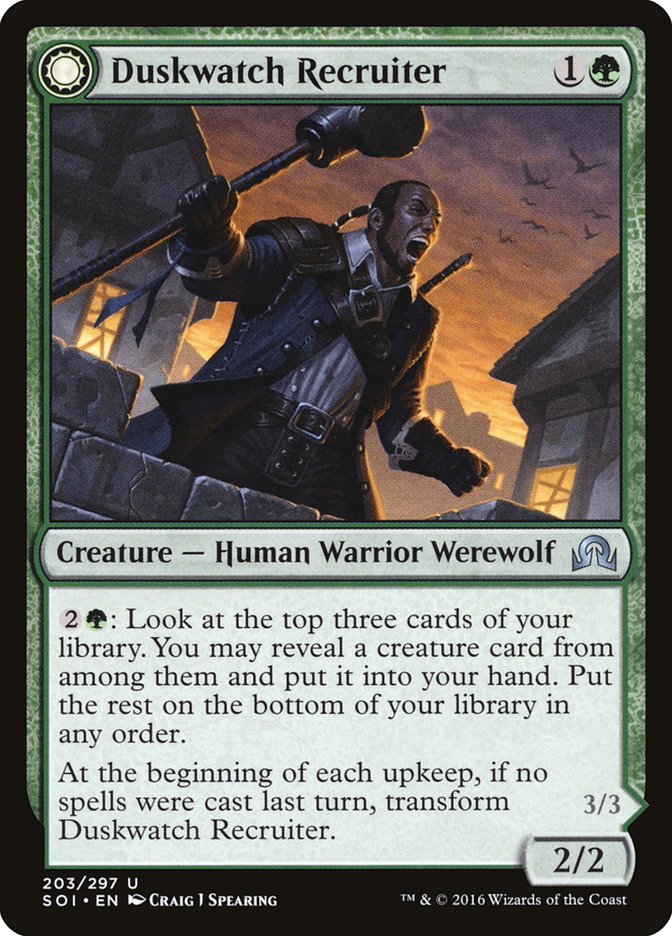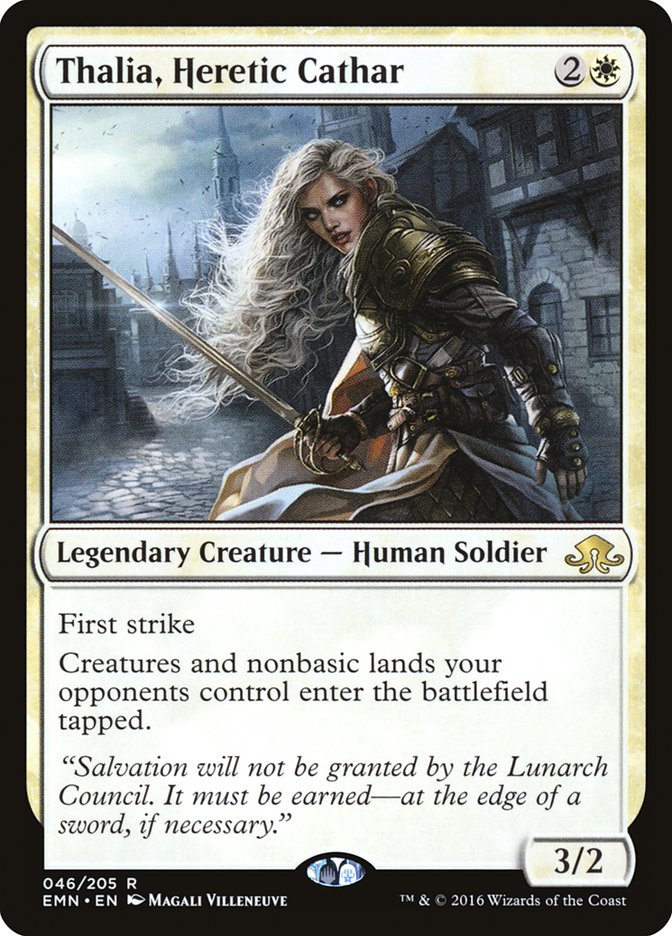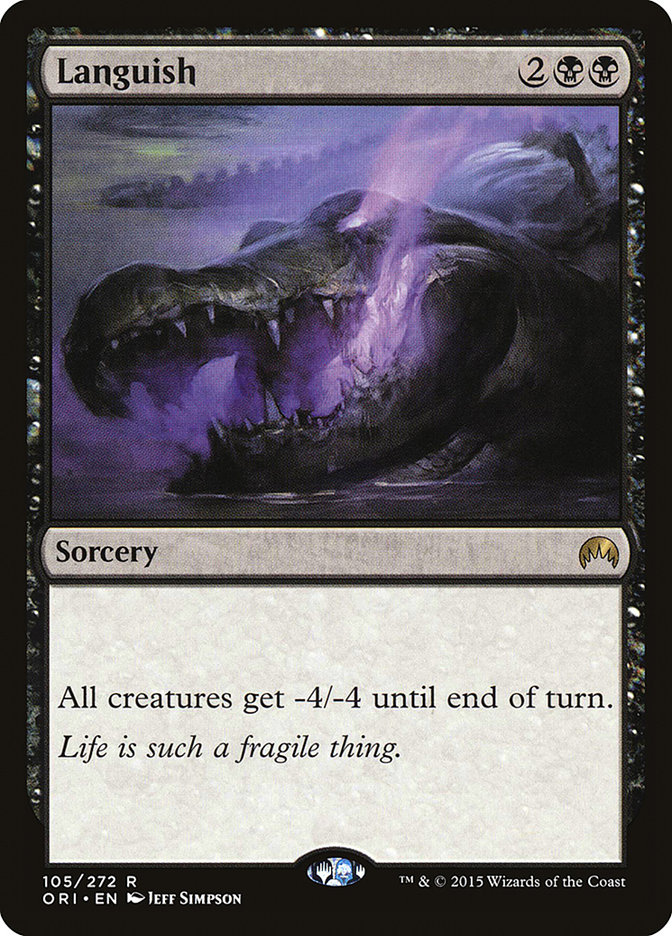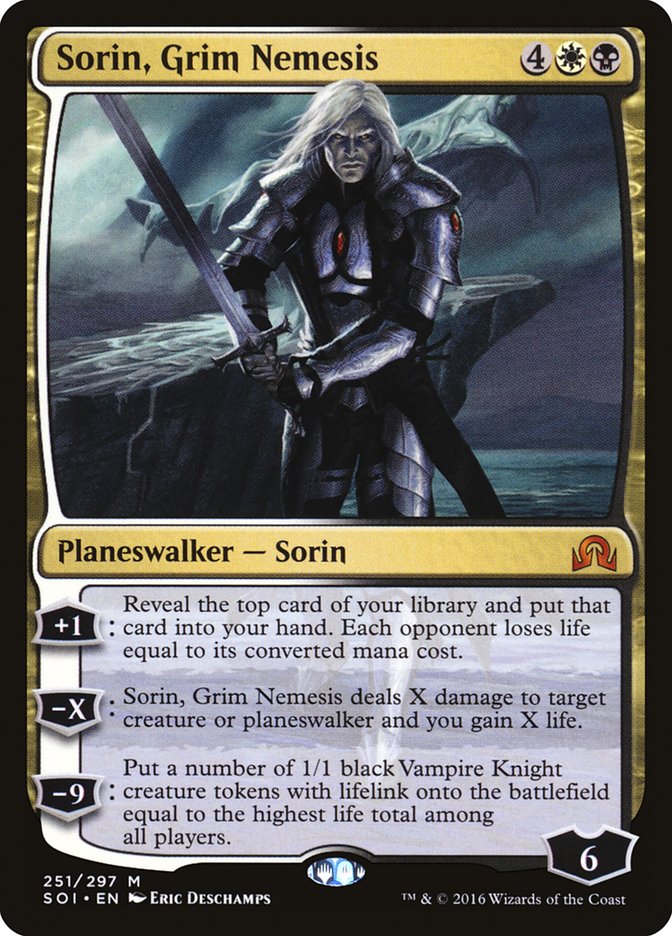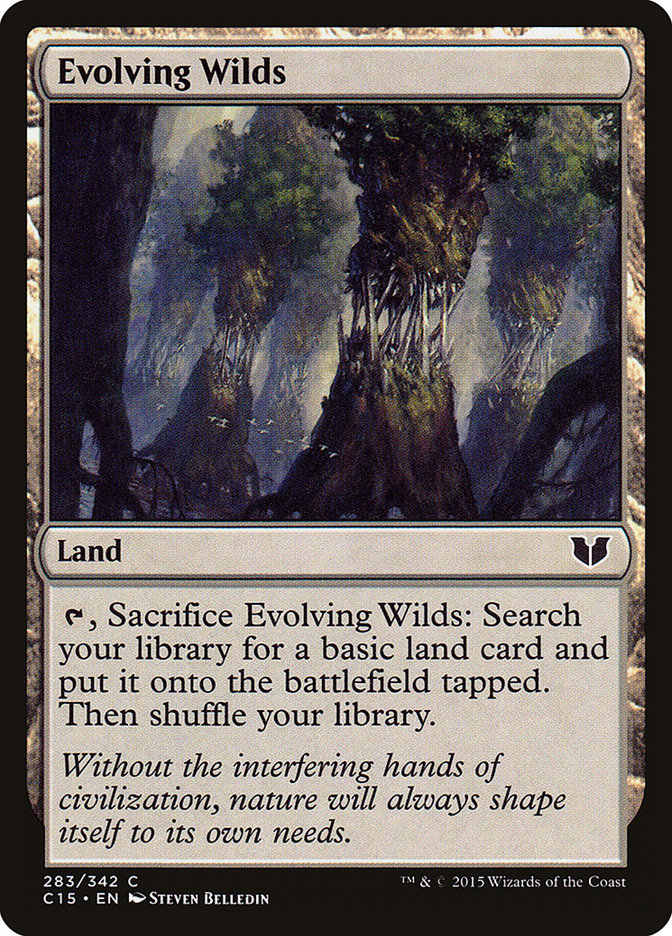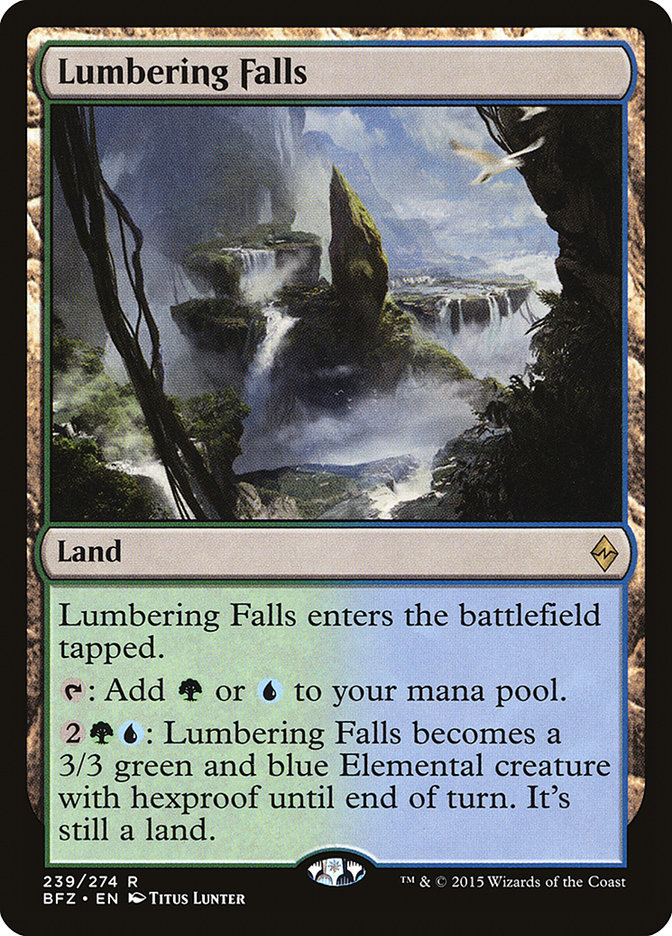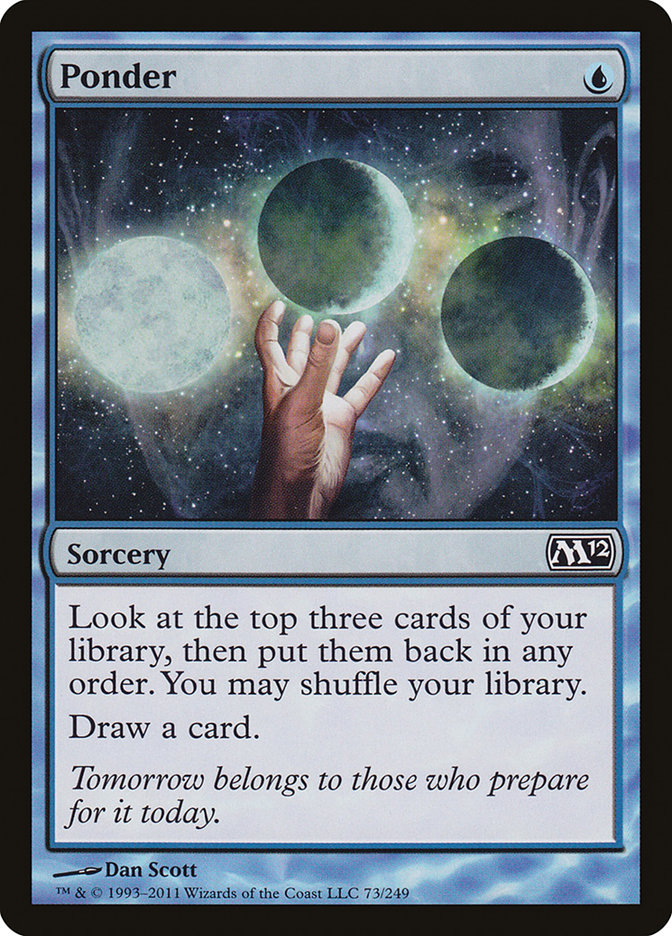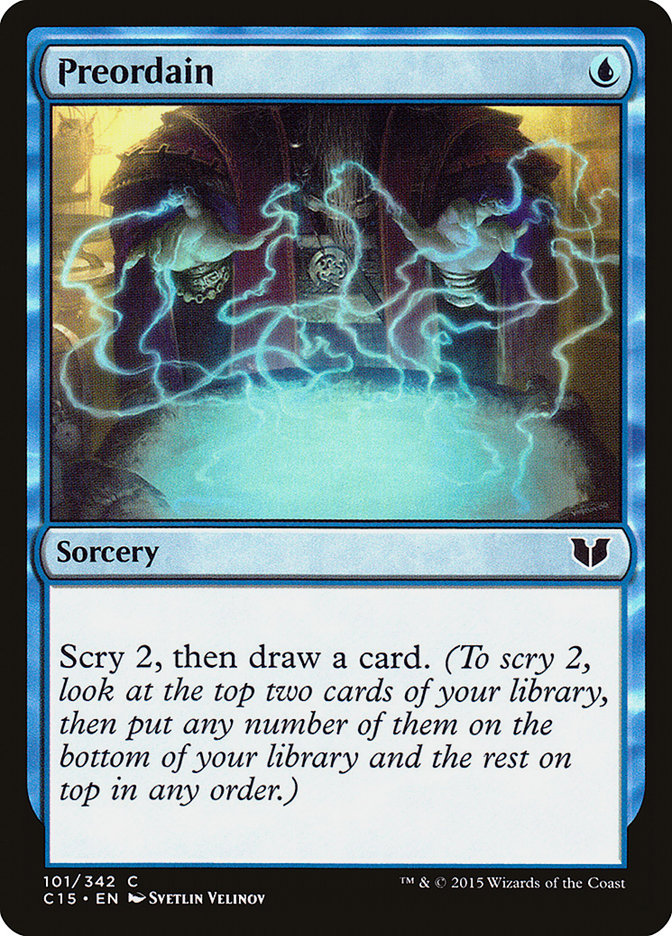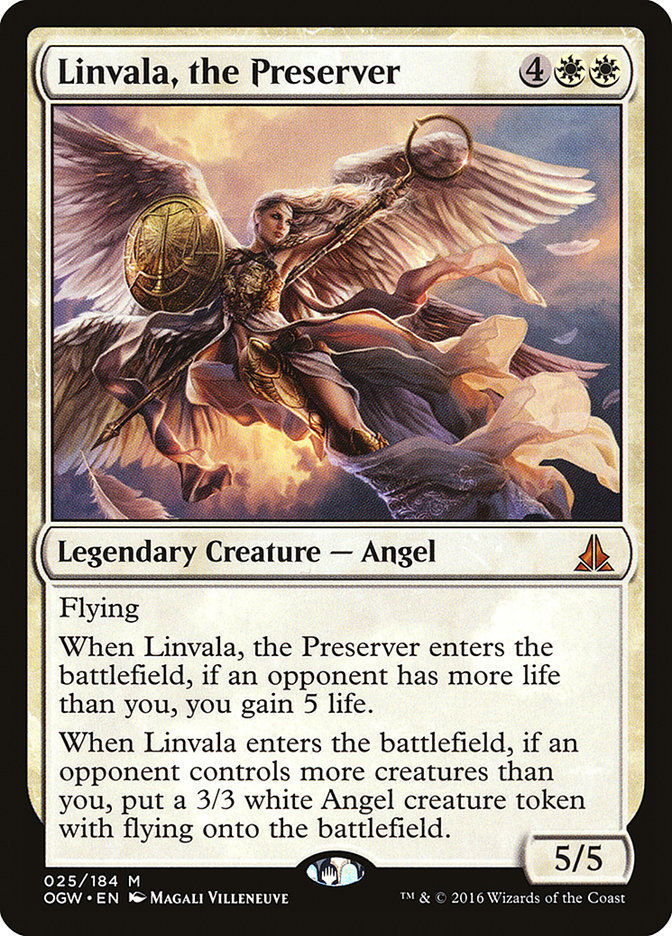If Bant Company emerged as the top deck of the format at #SCGCOL, after #SCGBALT last weekend it is now the singular, dominant force in the format. Bant Company dominated the tournament more thoroughly than any deck since, well, Bant Company in Columbus a few months ago. Similarly to that tournament, it took 42% of the Day 2 metagame along with seventeen of the Top 32 spots. It may have fallen short of the trophy, but make no mistake, this performance was equal parts impressive and alarming.
Collected Company has been a major force in Standard since the advent of Rally the Ancestors decks during Battle for Zendikar Standard.
It may not have been the best deck for the entire time, but it has certainly been the best for a large portion of it and has never been outside of the top tier of the format. Still, we have yet to see dominance on this level, and if these numbers, or numbers relatively close to them, persist for Pro Tour Eldritch Moon and beyond, a ban may be warranted.
I decided to pilot Bant Company last weekend since I didn’t have a better option, ultimately landing on the following list based heavily on Kyle Boggemes‘s list from #SCGCOL.
Creatures (27)
- 1 Nissa, Vastwood Seer
- 3 Bounding Krasis
- 4 Reflector Mage
- 4 Sylvan Advocate
- 1 Archangel Avacyn
- 2 Tireless Tracker
- 3 Lambholt Pacifist
- 3 Duskwatch Recruiter
- 2 Thalia, Heretic Cathar
- 4 Spell Queller
Lands (25)
Spells (8)

I liked Boggemes’s list because I assumed Spell Queller would force more early action, making the typical plan for the mirror, attrition, less effective. Bounding Krasis would allow for a more aggressive gameplan and give you an easy way to bluff Spell Queller or use your mana if your opponent plays a spell that you can safely ignore.
The additional flash creature makes the Werewolves better, since you can more effectively transform them without wasting your mana, so I favored Lambholt Pacifist over Selfless Spirit as the last two-drop. I liked Pacifist enough that I was willing to trim a Duskwatch Recruiter for an even 3/3 split to get a more effective body in combat. The faster games should make Recruiter’s smaller body a liability and give you less time to leverage its ability.
The last addition to be more aggressive was the inclusion of maindeck copies of Thalia, Heretic Cathar. Thalia not only makes combat awkward for your opponent, since they can’t block with new creatures, but any time you can make your opponent’s lands enter the battlefield tapped, the tempo gain is hugely significant. If that land is Evolving Wilds, then your opponent may as well concede from shame. Thalia, Heretic Cathar on the play can cement your early advantage immediately, while the body is still good enough to make it reasonable on the draw.
After the tournament, I can safely say that most of my assumptions about the deck were wrong. It is too difficult to consistently gain an early advantage in the Bant Company mirror, especially on the draw, and relying on doing so caused me to play a subpar card like Bounding Krasis at the expense of card advantage generators, putting me behind in longer games. Ironically, I even managed to cut the most important card in the mirror and toward gaining an early advantage: the 26th land.
Between Duskwatch Recruiter, Tireless Tracker, Lumbering Falls, and Nissa, Vastwood Seer, you rarely run out of resources or mana sinks, and making your first four to six land drops so as to not fall behind early is very important; even if the game goes long, the person who is ahead early will be able to best position themselves to win a long game. In the last round of the tournament, I was able to shake off a Tragic Arrogance that killed eight of my creatures, and that I knew was coming, because I had created such a substantial early lead. Had I realized my mistakes earlier, I could have been in the Top 8.
The most disappointing card in the deck was actually the most hyped:
It does great work when you are ahead, but that can be said of the majority of your cards, and it is a liability when you are behind and forced to act in order to catch up. It can put you ahead if your opponent plays into it, but when the game is even, there is really no need to do so. My assumptions about the deck needing to be more aggressive rested on the power of Spell Queller that I saw the previous weekend, but as players adapted to the card in their sequencing and included more removal spells for it, its effect on the deck has certainly waned.
Despite the realization that I still needed to focus on a longer game, Thalia, Heretic Cathar and Lambholt Pacifist were very impressive. The mirror is quite combat-focused and both these creatures match up well against the rest of the format. Everything I said about Thalia above still holds, especially in disrupting your opponent’s lands. The threat of Thalia can even force them to play awkwardly, holding basic lands that they would normally play earlier.
And Lambholt Pacifist is simply the most punishing card against early stumbles in the format while still being relevant later in the game. Being able to play effectively at both stages is quite important, and while Duskwatch Recruiter is better in the late game, it’s significantly worse early on while also being redundant in multiples.
If I had to replay the tournament, I would register the following list:
Creatures (26)
- 2 Nissa, Vastwood Seer
- 4 Reflector Mage
- 4 Sylvan Advocate
- 1 Archangel Avacyn
- 2 Tireless Tracker
- 4 Lambholt Pacifist
- 3 Duskwatch Recruiter
- 2 Thalia, Heretic Cathar
- 4 Spell Queller
Lands (26)
Spells (8)

The added Declaration in Stone copies and counterspells are to fight the W/B Angel Control deck, which gave me two tough matches. Every creature in the deck requires an answer and Dromoka’s Command is rarely good enough.
Creatures (10)
- 2 Kalitas, Traitor of Ghet
- 1 Linvala, the Preserver
- 1 Archangel Avacyn
- 1 Bruna, the Fading Light
- 3 Gisela, the Broken Blade
- 2 Thalia's Lancers
Planeswalkers (5)
Lands (26)
Spells (19)

You also need to be able to answer Languish and Sorin, Grim Nemesis, so overloading on spells and trimming on Collected Company is my plan.
Beyond that, this list is pretty typical of Bant Company these days. Despite my mistakes in deck design and philosophy, coupled with a healthy dose of in-game mistakes piloting such a technically complex deck for the first time, I was able to put up a respectable 11-4 record, good for fifteenth place. I went 3-3 in the mirror, only dropping one match to another deck in the field.
So if Bant Company performed so well for me, has such a strong pedigree, and only seems to be gaining in strength with the printing of Spell Queller, why did I come away so unimpressed?
This Deck Is Good, Not Great
Unlike the other dominant decks in Standard’s past, Bant Company has significant structural flaws. These make me adamant that its current level of results, much like those a few months ago, will quickly dissipate after the Pro Tour reveals a more balanced metagame.
The most glaring issue with the deck is its mana. In a deck chock-full of creatures, curving out in the early-game is of the utmost importance. Bant Company instead has a shaky three-color manabase that can not only have trouble finding the appropriate colors but plays a number of lands that enter the battlefield tapped.
Evolving Wilds and Lumbering Falls always enter tapped, and the Battle lands enter tapped a significant amount of the time as well. Having one of these lands on turn 1 is important so you don’t have them later, but having two or three of them is always going to inhibit your ability to cast your spells on time.
When your mana comes together Bant Company can look unbeatable, and it’s easy to be seduced by those draws, but consistency has always been a key factor in the most dominant decks; that’s why cards like Preordain and Ponder are so powerful.
Once Bant Company gets going with Tireless Tracker, it can tear through its deck in a hurry, but in the early-game you are at the mercy of the top of your deck, which is a dangerous place to live.
These development issues exacerbate the other issue with the deck, which is that it’s much better on the play than it is on the draw. Reflector Mage and Collected Company are good at catching up, but beyond that, your deck is a pile of creatures that you are relying on to stabilize the battlefield, which essentially means hoping your opponent doesn’t have the right removal spells.
If you were able to reduce your curve on the draw with cheap interaction, this issue would be mitigated, but the deckbuilding constraints of Collected Company prevent you from doing so. The removal spell you do have, Dromoka’s Command, is also poor on the draw when your opponent can keep your battlefield clear more easily. And the addition of Spell Queller only exacerbates this issue. If you bring Bant Company to #SCGRegionals, practice your dice rolling skills.
Collected Company also incentivizes you to load up on three-mana creatures so that your Company gets the maximum possible value. The list above has fourteen three-mana creatures, which will lead to a lot of awkward draws where, without Collected Company, you are unable to double spell until turn 5 or 6. Sequencing your tapped lands can make this issue look less prevalent, but when you are playing three-drops against your opponent’s four- and five-drops, there are going to be issues.
The W/B Angel Control deck does most of its damage by slamming powerful creatures starting on turn 4 until you run out of answers, and if you try to play more aggressively, you risk being punished by Languish. We have a large spate of powerful two- and three-mana creatures in Standard right now, which is why Collected Company has been so successful, but you are still fighting an uphill battle when trying to battle against cards like Linvala, the Preserver and Emrakul, the Promised End.
So where the inconsistent mana can leave Bant Company vulnerable to low-curve aggressive strategies, the constraints of Collected Company leave you at a power level disadvantage against high-curve control and midrange decks. Having issues at both ends of the spectrum leads me to believe that we simply have not found the best homes for powerful Eldritch Moon cards like Distended Mindbender, Eldritch Evolution, or Hanweir Garrison.
It’s Pro Tour Time
#PTEMN is this weekend, and much like at the previous Pro Tour, Bant Company is the deck to beat going in. The popularity of Bant Company led to some success for the archetype, but it was soundly outperformed once the collective effort of Magic’s top players was directed toward exploring the format. I would be very surprised if that is not repeated this weekend and we see a much more varied metagame with several teams bringing new decks that have a long-lasting impact on the format.
The hive mind is always prone to latching on quickly to a top deck, and certainly joining the dark side is easier than defeating them. Moreover, with the quick turnaround on SCG Tour® tournaments, there really isn’t the necessary time to dedicate to innovating. At best you have two or three days to put in testing, which is sufficient to tune an already existing list but much too little to explore an entire set, test brews, throw out the bad ones, and refine the good ones.
Sure, you could skip an Open to focus on testing for a later one, but that sacrifice is much too large when the leaderboard is as competitive as it is this year. This isn’t to say that The SCG Tour® is worse, just that it rewards a different skill set. Players like Jeff Hoogland will still innovate and perform well, but for the most part you’ll see success in the hands of players who are experienced and comfortable with their archetype: Todd Anderson with Jeskai Black, Tom Ross with W/R Humans or Infect, and even yours truly with Mono-Blue Devotion or Legacy Elves and Storm.
Right now, we’re at the “if it ain’t broke, don’t fix it” stage of Standard, but by next week you’ll be calling the electrician, plumber, and contractor all at once.
Bant Company is a good deck, but we can do better.


